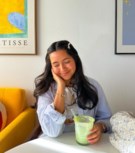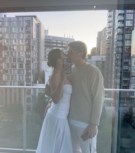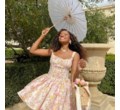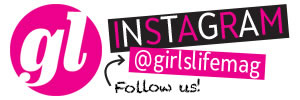LIFE
Snag That Dream Job: I wanna...be a dance choreographer!
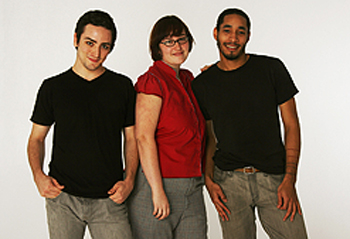
Find yourself dancing along to every song that comes on the radio? Always looking for new ways to move, challenge yourself and think? Well look no further, dancing queen, we may have found the perfect career for you!
I got a chance to dance and chat with modern dance choreographer, Jen McGinn (check out her site at: jenmcginndance.org), about her inspirations, creative process and the ups and downs of her awesome job.
GL: When and how did you know you wanted to be a choreographer?
Jen: I started dancing before I can really remember. My mom was a ballet dancer and teacher, so I grew up in a dance studio. I was around it all the time.
I knew [I wanted to be a choreographer] at a very young age. I was always choreographing as a kid. I made my first dance that was performed around the age of 13, and I kept trying out choreography. I went to a performing arts high school where I took classes in composition and got to work with a lot of dance students there. When I was in college, I went to a school that was very heavily focused on choreography, so I really put all my effort towards that. I decided there that choreography was something I really wanted to pursue.
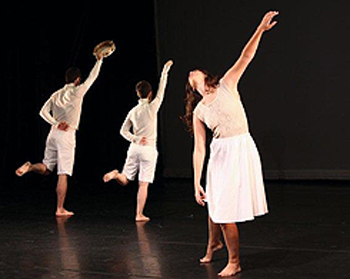
GL: Where do you draw inspiration for your pieces?
Jen: All sorts of places and things I encounter every day. I’m constantly reading books or watching movies that inspire me. I would say it’s mainly through other creative outlets that I have ideas that serve as my own inspiration.
I really look to the performers to help me create the movement, so it’s more specific to their bodies and what they’re interested in performing, in addition to supporting the conceptual ideas that I’m trying to get across. I also have a very classical background, so I really focus on merging formal, classical ideas of dance with more contemporary ideas.
GL: Do you ever hit mental road blocks?
Jen: There are definitely times, especially when I try to force something—when I think, “I need to have this done”—when I feel pressure. If I just relax or get into the idea with other people, it normally flows pretty easily. Just having people around me to work with tends to allow us to produce something great.
GL: To become a choreographer and start your own company, where do you even begin?
Jen: I think I’m still in the beginning stages. Most people do it through their own dancing and then turn that into a company. The dance world is actually very small in terms of gathering the people you’re interested in working with, doing shows with and gaining inspiration from other works with. It’s a very small world. I was never interested in being a performer, so I work differently than a lot of other choreographers.
But I’m still interested in working with people I went to school with or that I prefer dancing with, so the pieces are something we all care about. My brother, James, is a dancer and my other siblings are artists as well, so it’s all about making connections with the people in the community around you.
GL: You said you felt you were in the beginning stages, so what is your ideal end result?
Jen: I would want more visibility and more access to finding different spaces, traveling to different countries and just expanding my network and my community.
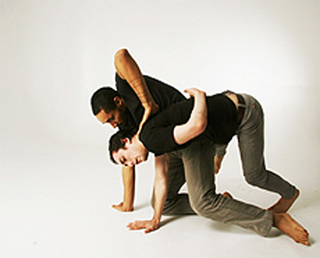
GL: Can you walk us through your creative process and a typical work day?
Jen: I start with an idea that is usually a pretty simple concept. I either have a dream and have an image from that dream or I read a book and think about this one conceptual idea that serves as a base. I spend a lot of time thinking about that idea and planning it out. I’ll write things down, draw or make a map. Once I’ve worked that idea in many, many different ways, I’ll start incorporating other people. We talk about it, get a studio, and I usually think of a lot of different techniques to get the performers to come up with different movements and solutions to the problems.
That opens up my ideas so much more creatively and helps me think. Then it becomes, for me, a logic problem. I think about different elements in terms of where things happen in space, direction, and relationships between the performers and more theatrical elements of lighting and colors and props. Together that creates the whole picture.
GL: What is the best part about your job?
Jen: The best part about my job is getting to work with my friends and family, the people that I admire so much. We have a great time and work very hard, but I can’t imagine a better way to share something with people who can create something amazing together. Then we get to share that with an even larger group of people who come to the shows and get to see their responses. It’s really incredible.
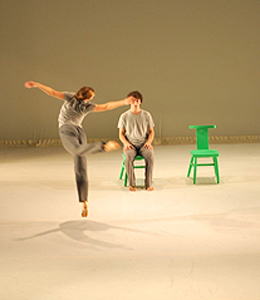
GL: What is the worst part about your job?
Jen: The worst part is the lack of support that can sometimes be felt in art. A lot of times with dance, it’s hard to find funding. It’s hard to keep going, and it can be very discouraging. It’s a constant negotiation of trying to find space or support or money or shows. There’s a big business side to it, as well as the creative side.
GL: Do you have any advice for young girls interested in this field and for dealing with a sometimes harsh environment?
Jen: If it’s something that you’re interested in, it’s worth it for you to keep going. It can definitely be very cutthroat, but it’s also incredibly rewarding. Just fight for it, work hard, and it will pay off. It’s all about communicating and connecting with the people around you and creatively coming up with solutions to make things work for you.
Wanna learn more about Jen’s amazing work? Head over to jenmcginndance.org for pics, videos, and more!
POSTED IN How to get a job

 become a contributor
become a contributor




